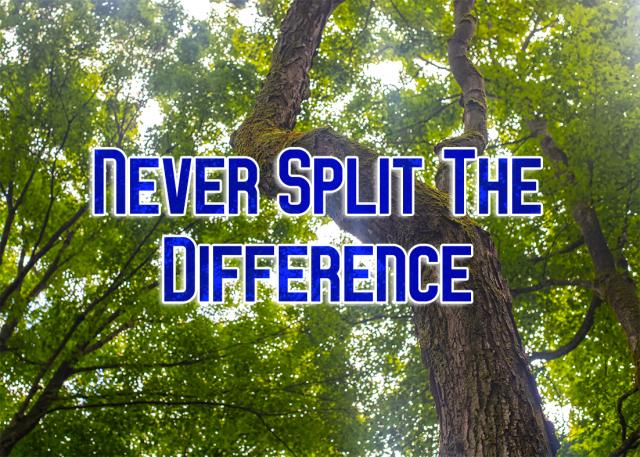Earlier this year I read the book Never Split the Difference by Chris Voss. It’s a book about negotiation, and on the face of it not a great candidate for a blog. But I found the book fascinating, found it helpful on several levels, and decided it was worth writing about in this blog. So here goes.
Chris Voss has had a remarkable career as a negotiator, from serving as the FBI’s lead international kidnapping negotiator to teaching negotiation at many top universities. Voss begins the book by taking issue with the traditional view that negotiation involves two parties overcoming their emotional brains and engaging in a rational, joint problem-solving endeavor. Instead, Voss claims that effective negotiation begins with a fundamental human principle that applies to all areas of our lives: that more than anything else people desire to be understood and accepted, and that listening is the best, most effective and cheapest way to help others achieve that. At heart, a very emotional thing. So you may see where this blog is headed. The book is about negotiation. But I believe the principles he sets forth for effective negotiation actually apply quite broadly to how we can improve our relationships with others in all different areas.
According to the author, most people approach negotiation so preoccupied with arguments that support their own position that they are incapable of listening openly and attentively to the other person. Instead, Voss thinks we’re better off setting our own arguments aside and making the other person our sole and all-encompassing point of focus. The goal is for the other person to feel and know that we truly want to understand her. Surprisingly, this is most important with strong assertive, aggressive people. Often our natural instinct with these folks is to approach them in a strong, assertive, even confrontational, manner. But according to Voss, assertive people have a strong need to be heard and are actually incapable of listening to you until they know that you’ve heard them.
So how do we approach a negotiation in a manner that makes the other person feel this way? Voss offers a couple of ideas. First, your tone of voice. He identifies three-voice tones available to negotiators: the late-night FM/DJ voice, the positive/playful voice, and the direct/assertive voice. He says that choosing the right tone of voice is like reaching into a person’s brain and flipping an emotional switch. Although we’re normally inclined to use the assertive voice when negotiating, he says don’t do it. Not helpful. Instead, most of the time we should use the positive/playful voice. This voice connects with people. It’s the language of connection and building rapport. Then, at strategically important times, he advocates using the late-night FM/DJ voice. This voice is deep, soft, slow and reassuring. When you inflect your voice downward, it conveys that you’ve got things covered, that you’re in control. It’s reassuring. And people relax. This voice is particularly helpful in getting to the finish line in a negotiation.
The other two tactics Voss recommends are “mirroring” and “labeling”. First, mirroring. Mirroring is essentially imitating. Mirroring has the effect of comforting a person and can be done in several ways. It can be done with speech patterns, with body language, with tone of voice, and/or with vocabulary and tempo. This is largely unconscious, but it causes people to bond and build rapport with you, which leads to trust. In the context of negotiation, it usually involves repeating the last three words (or the couple most important words) that someone has just said. The message behind mirroring is, “Please help me understand.” And repeating part of what they just said is the best way to do that.
Next is “labeling”. Labeling is a way of validating someone’s emotions by acknowledging those emotions. There’s nothing more frustrating to a person than feeling like the person he’s negotiating with really isn’t listening. Labeling shows you’re listening and acknowledges his emotion. The first step in labeling is to detect the other person’s emotional state. Once you’ve identified it, then label. Labels begin with the words like “It seems like…”, It sounds like…”, or “It looks like…”, followed by an emotion or something else you’ve observed. After labeling, be silent. Let the person agree or disagree, and then they will likely reveal more of themselves. The more you convince someone that you truly understand their feelings, the more change becomes possible. The foundation for a breakthrough has been laid.
This is all a little more tactical than the things about which I normally write, but it occurred to me that while these techniques are important for a negotiator, they are also very important for a person who simply wants to get along with people better and live life more successfully. Choosing the right tone of voice, and effectively using the mirroring and labeling techniques Voss describes, can help us build strong relationships and successfully work through conflict every day. Effectively using these tools can help other people open up to you in ways that provide the foundation for deeper relationships.

So make a New Year’s Resolution to read Never Split the Difference.
Applying the principles contained in this book will make you a better
negotiator, but more importantly a more effective person.
Jeff Meyer
Baillie Lumber

